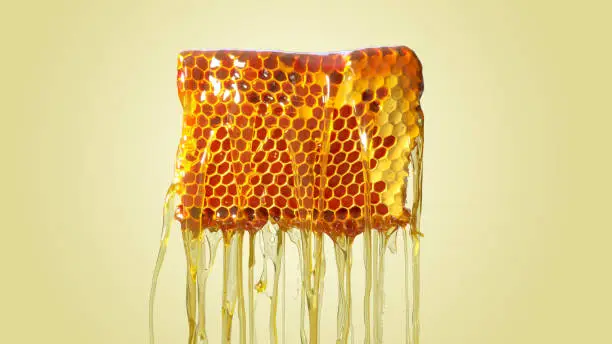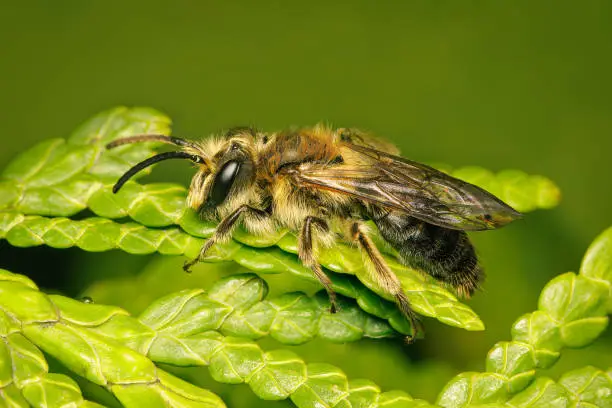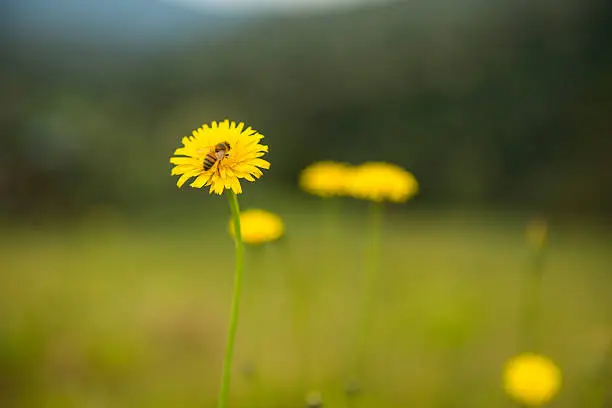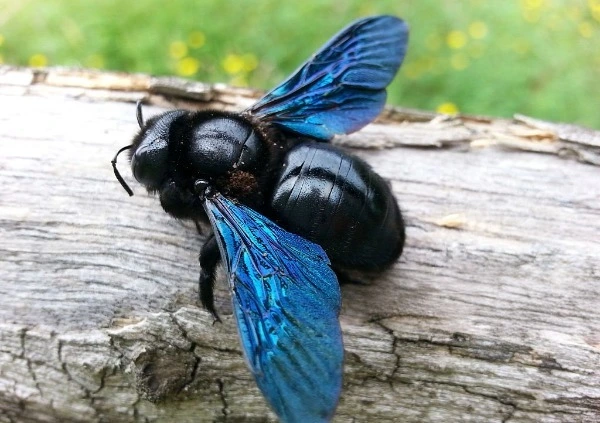Honey Bee Vs Bumble Bee
Among the most identifiable insects in the garden are the honey bee and the bumble bee. What, though, are their differences and similarities? This article compares and contrasts honey bees and bumblebees to help you understand their differences.
What is the difference between honey bees and bumble bees?
Honey bees (Apis mellifera) are social insects known for their complex hive structures and organized colonies. They are crucial pollinators, responsible for fertilizing a wide variety of flowering plants. Honey bees play a vital role in agriculture, contributing to the production of fruits, nuts, and vegetables.
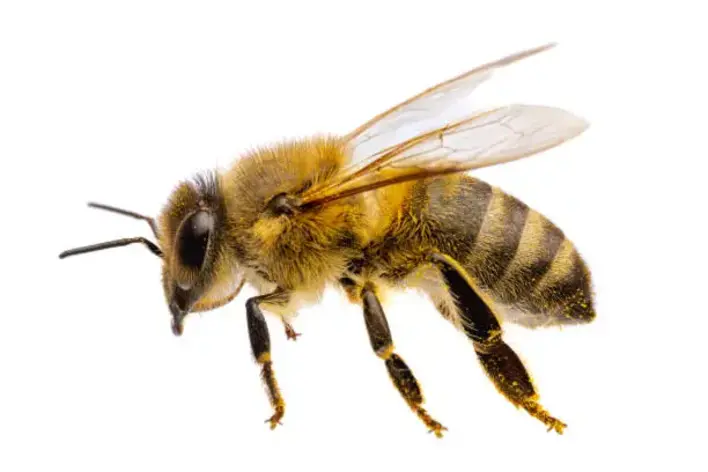
Bumble bees (Bombus spp.) are robust, fuzzy bees that also play a significant role in pollination. Unlike honey bees, bumble bee colonies are smaller and typically found in nests built in the ground or other sheltered locations. Bumble bees are known for their ability to perform “buzz pollination,” a technique where they vibrate their bodies to release pollen from certain flowers.
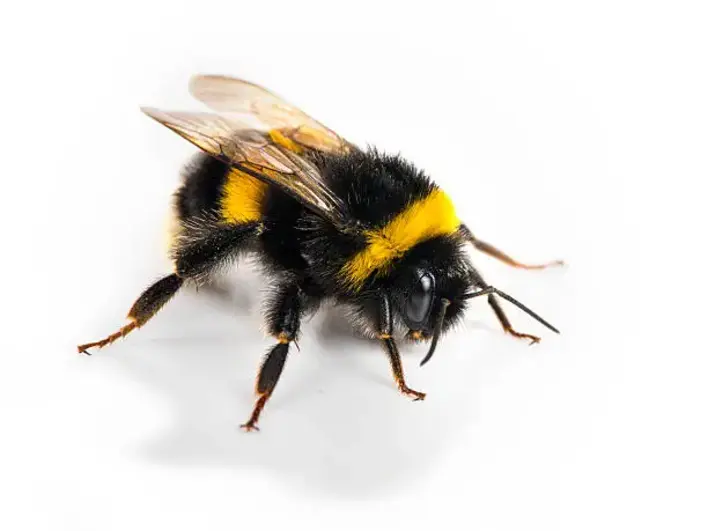
Physical Characteristics of Honey Bees
Size: Honey bees are generally smaller, with worker bees measuring around 0.4 to 0.6 inches in length.
Color: They are typically brown or black with orange or yellow stripes. The coloration can vary among different honey bee species.
Distinguishing Features: Honey bees have a more slender and streamlined body. Worker bees have specialized body structures, such as pollen baskets on their hind legs.
Physical Characteristics of Bumble Bees
Size: Bumble bees are larger than honey bees, with worker bees ranging from 0.6-1″ to (1.5-2.5cm) in length.
Color: They often have a more vibrant coloration, with a combination of black, yellow, and orange. The specific color patterns can vary among bumble bee species.
Distinguishing Features: Bumble bees are characterized by their robust and fuzzy appearance. They have a broader body and a dense layer of hair covering their bodies.
Social Structure of Honey Bees
Hive Structure: Honey bees live in colonies housed in intricate, hexagonal wax cells. These cells are organized into combs (Honeycomb), with each serving specific functions like brood rearing or honey storage.
Organization: The colony consists of a single queen, worker bees (females), and drones (males). Worker bees perform various tasks, and there’s a highly structured division of labor.
Colony Size and Lifespan: Honey bee colonies can vary in size but are generally larger than bumble bee colonies. A honey bee colony can survive for several years, with individual worker bees having a lifespan of a few weeks to a few months.
Social Structure of Bumble Bees
Nest Structure: Bumble bees create nests in cavities, often underground or in grassy areas. The nest is made of bee wax and contains a series of cells for brood and food storage.
Social Hierarchy: Similar to honey bees, bumble bee colonies have a single queen, workers, and drones. However, bumble bee colonies are typically smaller, and there’s a more flexible division of labor among workers.
Colony Size and Lifespan: Bumble bee colonies are generally smaller, with a few hundred individuals. The colony survives for a single season, and only the newly mated queens overwinter to establish new colonies in the following year.
Although they are far more independent, bumble bees are social beings that also reside in a nest. Unlike honey bees, their colony does not function as a unit. The queen will emerge at the end of the colder months and go out on her own to establish a new hive.
Nesting habits in Honey bees
Most honey bees build their nests in safe, protected areas above ground. They often build hives in the hollows of trees, but they’re also happy with man-made hives. They use beeswax to build large honeycomb sections of their new homes, which they use to store food supplies and raise their brood.
Nesting habits in bumble bees
Most bumble bee species build nests underground, seeking out old burrows, house foundations, or even piles of rubble. To build their new home, they’ll look for stems, dry grass, and any other suitable plant material. Within the nest, the queen will create multiple wax cells for the purpose of laying eggs and raising offspring. Every year, the bumbles leave the nest and relocate to a new hibernation site.
Reproduction in Honey Bees
In honey bee colonies, reproduction is a highly organized process. The queen bee, the sole fertile female in the colony, lays both fertilized and unfertilized eggs. Fertilized eggs develop into worker bees, while unfertilized eggs become drones (male bees). The queen mates with drones outside the hive during a short period early in her life. Worker bees assist in raising and caring for the brood, and the hive’s overall reproductive success is closely tied to the queen’s egg-laying capacity.
Reproduction in Bumble Bees
Bumble bee colonies follow a different reproductive pattern. Each colony typically has a single queen, workers, and male bees. The queen, after mating, lays fertilized eggs that develop into workers. Towards the end of the season, the queen lays unfertilized eggs that give rise to male bees. These males then mate with new queens, who go on to hibernate and establish new colonies in the following spring. Unlike honey bee colonies, bumble bee colonies are annual, with only the mated queens surviving through the winter to initiate the next generation. This annual cycle allows bumble bees to adapt to changing environmental conditions and ensures genetic diversity within the population.
Role of Honey Bees in Commercial Pollination
Honey bees are vital contributors to commercial pollination, playing a crucial role in agriculture. Beekeepers transport honey bee colonies to various crops, where the bees pollinate flowers during foraging. This service is essential for the production of many fruits, vegetables, and nuts. The efficiency of honey bees in pollination has made them indispensable to modern agriculture, contributing significantly to increased crop yields.
Role of Bumble Bees in Natural Ecosystems
Bumble bees are essential pollinators in natural ecosystems, particularly in regions with diverse plant life. Their unique ability to “buzz pollinate” – vibrating their bodies to release pollen from certain flowers – makes them effective pollinators for various plant species. Bumble bees are especially adept at pollinating crops such as tomatoes, peppers, and blueberries. Additionally, they contribute to the pollination of wildflowers, supporting biodiversity and the health of natural habitats. The natural pollination services provided by bumble bees contribute to ecosystem stability and the survival of numerous plant species.
Common Threats to Honey Bee Populations
| Threat | Description |
| Pesticides | Agricultural use of pesticides, particularly neonicotinoids, poses risks to honey bees, impacting their health. |
| Habitat Loss | Urbanization, deforestation, and changes in land use result in the loss of forage and nesting sites for honey bees. |
| Climate Change | Altered climate patterns affect the availability of flowers and impact the synchronization of bee and plant cycles. |
| Diseases and Parasites | Honey bees face threats from various pathogens and parasites that can weaken and reduce the lifespan of colonies. |
| Monoculture Agriculture | Large-scale, single-crop farming limits the diversity of available forage, affecting honey bee nutrition and health. |
| Pollen and Nectar Quality | Contamination of floral resources with pollutants or low-quality nectar and pollen can harm honey bee colonies. |
Common Threats to Bumble Bee Populations
| Threat | Description |
| Habitat Loss | Destruction of natural habitats, including meadows and grasslands, reduces available forage and nesting sites for bumble bees. |
| Pesticides | Agricultural and residential use of pesticides, especially neonicotinoids, poses a significant threat to bumble bee health. |
| Climate Change | Altered climate conditions affect flower availability and disrupt the timing of bumble bee life cycles and foraging patterns. |
| Diseases and Parasites | Bumble bees are susceptible to diseases and parasites, impacting colony health and potentially causing population declines. |
| Competition with Honey Bees | Honey bees may outcompete bumble bees for floral resources, reducing the food supply for bumble bee colonies. |
Hive population
If there is sufficient room and food sources, a honey bee colony will grow quickly. It can easily accommodate 20,000–80,000 people. As the colony outgrows its home, half the hive will swarm in search of a new home with more room to expand.
Bumblebees only have a few hundred individuals at most. One lone queen establishes the colony at first, building the house on her own before giving birth.
Table on Common Misconceptions
| Common | Misconceptions |
| Honey bees are always aggressive. | They are generally docile and sting only when their hive is threatened. |
| Bumble bees are harmful and likely to sting. | Bumble bees are non-aggressive and rarely sting unless provoked. |
| All bees produce honey. | Only honey bees produce significant amounts of honey; bumble bees store minimal food. |
| Honey bees are the only pollinators. | Bumble bees play a crucial role in pollination, complementing honey bees. |
| All bees have a single queen. | Unlike honey bee colonies, bumble bee colonies may have multiple coexisting queens. |
FAQs
What is the main difference between carpenter bees and honey bees?
Carpenter bees are solitary nesters in wood, while honey bees live in colonies and build wax hives.
Are bumble bees as important as honey bees for pollination?
Both bee varieties are essential for pollinating crops. While bumble bees are more thorough, efficient pollinators, honey bees are more important for agriculture. Their numbers can be managed and colonies can be moved in large numbers to different areas as required.
What sets Italian queen bees apart from other honey bee subspecies?
Italian queens are a distinct subspecies known for their gentle temperament, prolific egg-laying, and adaptability to various climates.
Are bumble bees more aggressive than honey bees?
Although both bee varieties are relatively docile, a bumble bee is likelier to sting than a honey bee, as it won’t die from defending itself. Honey bee aggression varies significantly by race. Some honey bee breeds, such as Africanized, are much more aggressive than bumble bees.
Are honey bees and bumble bees the same species?
No, they belong to different species. Honey bees are primarily Apis mellifera, while bumble bees belong to the genus Bombus.
Do honey bees and bumble bees live in the same types of environments?
While they share some habitat preferences, honey bees are often found in managed hives, while bumble bees nest in the ground or other sheltered locations.
Are honey bees and bumble bees social insects?
Yes, both are social insects, but honey bees have larger colonies and more complex social structures.
Do honey bees and bumble bees sting, and is there a difference in the severity of their stings?
Yes, both can sting, but honey bee stings are barbed and can be fatal to the bee, while bumble bee stings are not typically lethal.
Do honey bees and bumble bees have different flight patterns?
While both exhibit similar hovering flight, bumble bees can perform a distinctive figure-eight pattern, especially during foraging.
What is the role of queens in honey bee and bumble bee colonies?
Queens are central to both colonies but have different reproductive roles. Honey bee queens lay all the eggs, while bumble bee queens start the colony and then lay eggs.
